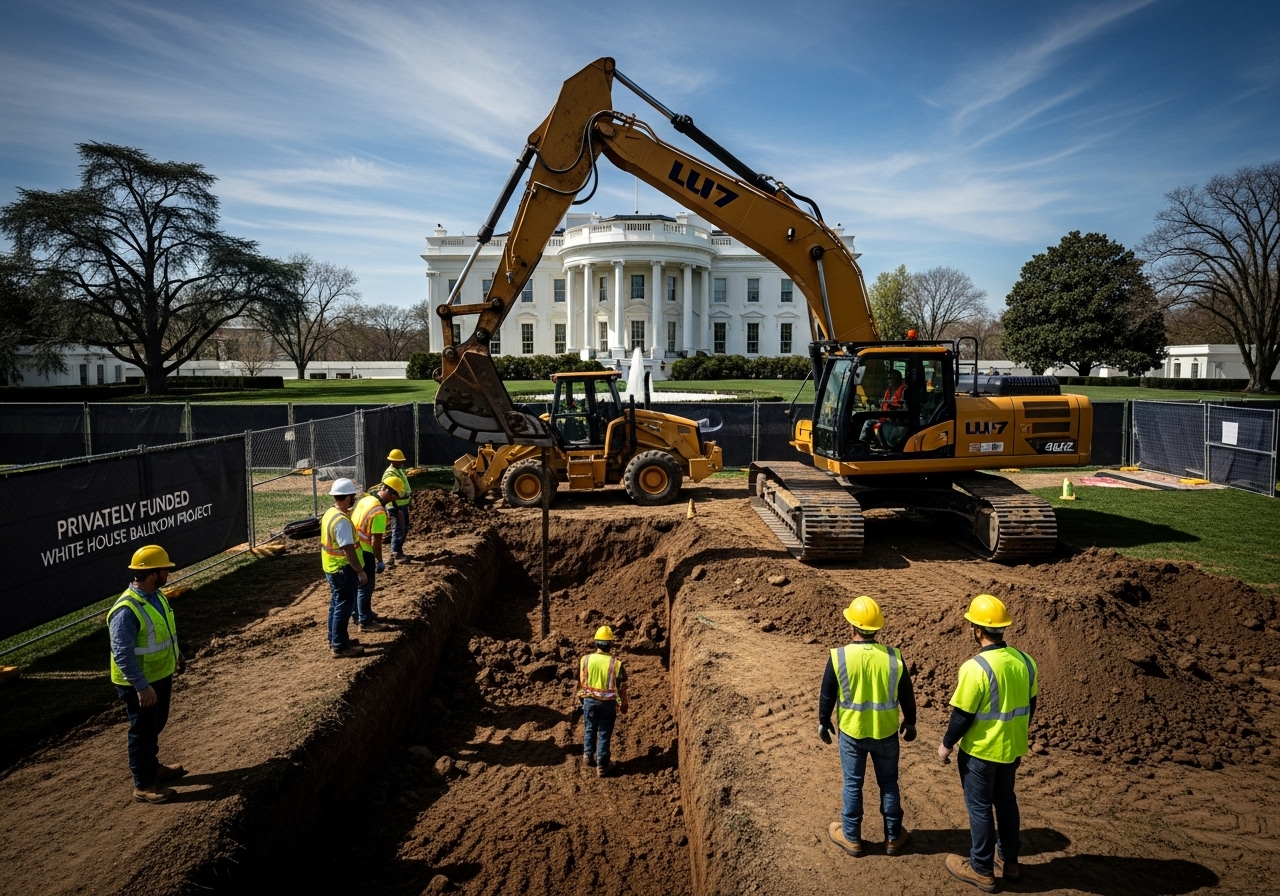President Donald Trump’s plan to build a new ballroom at the White House has sparked criticism from former Secretary of State Hillary Clinton and brought back a controversy from more than 20 years ago. The situation shows how past political battles still influence today’s debates, especially when it comes to presidential legacies and the use of public property.
The White House Ballroom project, announced earlier this month by President Trump, is a privately funded effort to add a 90,000-square-foot event space to the White House grounds. Trump said the new ballroom will be used for state visits, public events, and celebrations. He also made clear that no taxpayer money will be used, with funding coming from private donors, American companies, and the president himself.
“This Ballroom will be happily used for generations to come,” Trump said in a post on Truth Social. He also noted that the East Wing of the White House will be modernized as part of the project.
Despite the private funding, the project drew criticism from Hillary Clinton, who served as First Lady from 1993 to 2001. “It’s not his house,” Clinton wrote on social media. “It’s your house. And he’s destroying it.” Clinton’s post argued that the White House belongs to the American people, not just to the sitting president.
This comment quickly drew responses from Trump supporters and Republican lawmakers, who pointed to a 2001 controversy involving the Clintons. When President Bill Clinton left office, he and Hillary were accused of taking furniture and gifts from the White House that were meant to stay there. According to reports from The Washington Post at the time, the Clintons returned about $28,000 in furniture and paid over $86,000 to keep other gifts they had received.
The Clintons said the problem was caused by a “cataloging error” and denied any wrongdoing. “Of course, if the White House now determines that a cataloging error occurred … any item in question will be returned,” their office said in 2001. Still, the issue left a mark on public opinion and was seen by many as a breach of public trust.
White House spokesman Davis Ingle responded to Clinton’s criticism of the ballroom project by bringing up the furniture incident. “Crooked Hillary Clinton stole furniture from the White House on her way out until she was forced to return it,” Ingle said in a statement to Fox News. “Meanwhile, President Trump is restoring the White House to its proper glory — at no expense to the taxpayer.”
Senator Ted Cruz also weighed in, writing on social media, “At least he didn’t steal the silverware.” Conservative commentators joined in, pointing out what they saw as hypocrisy in Clinton’s comments.
The debate over the ballroom project is more than just a fight over construction at the White House. It reflects a larger political divide over how presidents should use their power, public property, and private funding. Trump’s supporters argue that a privately funded improvement to the White House is a good thing, especially if it doesn’t cost taxpayers anything. Critics, like Clinton, worry that changes to historic buildings may reflect more about a president’s personal brand than the country’s shared heritage.
The Clinton furniture controversy also raises questions about how former presidents and their families should treat public property when they leave office. Although the Clintons returned some items and paid for others, the memory of the incident still affects how people view their time in the White House.
As construction moves forward, the new White House Ballroom may become a symbol of how different presidents choose to leave their mark. Whether seen as a gift to the nation or a sign of personal excess, the project has already stirred debate about leadership, legacy, and the line between public service and personal style. For now, the ballroom is set to become part of the White House’s future, paid for by private donors, and shaped by the lasting influence of political rivalry.





